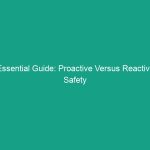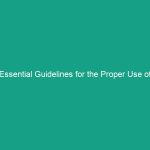Introduction
Good morning team! Today, we’re going to discuss an essential aspect of Workplace Safety: proper lighting. This Toolbox Talk will cover the must-know guidelines for proper lighting in the workplace to enhance Safety. Good lighting is not just about visibility; it’s about creating a safe and efficient working Environment. Proper lighting can significantly reduce accidents and enhance productivity, so let’s dive in!
Understanding Proper Lighting in the Workplace
Proper lighting in the workplace refers to the adequate illumination of work areas to ensure visibility and Safety. It plays a crucial role in preventing accidents and maintaining a comfortable working environment. Poor lighting can lead to eye strain, decreased productivity, and an increased risk of injuries. Despite its importance, many workplaces overlook lighting as a critical safety concern.
Common misconceptions include the belief that any light source is sufficient for safety. However, not all lighting is created equal, and factors such as brightness, color temperature, and placement are vital. Understanding these elements can help mitigate risks and enhance overall Workplace Safety.
Key Hazards, Risks, and Safety Considerations
Insufficient or improper lighting can lead to several Hazards in the workplace, including:
- Increased Risk of Accidents: Poor visibility can cause trips, slips, and falls.
- Eye Strain: Inadequate lighting can lead to fatigue and decreased focus, increasing the likelihood of mistakes.
- Reduced Security: Dimly lit areas can make it easier for accidents or crimes to occur.
- Compliance Issues: Not adhering to lighting Standards set by OSHA and other regulatory bodies can lead to penalties.
Real-world consequences of ignoring proper lighting can be severe. For instance, a poorly lit warehouse can lead to multiple accidents, resulting in injuries and potential lawsuits. It’s essential to recognize these risks and take proactive measures to address them.
Best Practices, Procedures, & Actionable Advice
Step-by-Step Safety Procedures
To ensure proper lighting in the workplace, follow these Best Practices:
- Assess Lighting Needs: Evaluate the specific lighting requirements of each area based on tasks performed. For instance, assembly lines may need brighter lights compared to break rooms.
- Use the Right Lighting Type: Utilize a combination of ambient, task, and accent lighting. LED lights are often preferred due to their energy efficiency and longevity.
- Regular Maintenance: Schedule routine inspections and maintenance of lighting fixtures to ensure functionality. Replace burnt-out bulbs immediately and clean fixtures regularly to maximize light output.
- Consider Color Temperature: Use lights with a color temperature of 3000K to 4000K for a comfortable working environment. This range promotes alertness and reduces eye strain.
- Positioning of Lights: Ensure that lights are positioned to minimize shadows and glare. Proper placement can enhance visibility and reduce the risk of accidents.
Real-Life Examples
Let’s consider a case study: In a manufacturing facility, employees reported frequent accidents due to poor lighting in the assembly area. After implementing brighter LED fixtures and adjusting their placement, the facility saw a 30% reduction in accidents over six months.
Another example involves an office setting where employees complained of eye strain. By introducing adjustable desk lamps, the company improved employee comfort and productivity significantly.
Regulations, Standards, and Compliance
Compliance with workplace lighting Regulations is critical for employee safety. osha has specific standards for lighting in various work environments. For example, general workplaces require a minimum of 5 foot-candles of light, while areas involving detailed work may require significantly more.
By adhering to these standards, not only do we protect our employees, but we also avoid potential fines and legal issues. Regular audits should be conducted to ensure compliance with these regulations, and adjustments should be made based on the results of these assessments.
Employee Engagement & Discussion
Now, I want to hear from you! Consider the lighting in your work area:
- What safety challenges have you encountered related to lighting?
- Do you feel that the current lighting conditions allow you to work safely and efficiently?
- What suggestions do you have for improving lighting in your area?
Let’s discuss these questions and share our insights. Your feedback is crucial in creating a safer work environment.
Conclusion & Key Takeaways
In conclusion, proper lighting is a vital component of Workplace Safety. By following the guidelines we’ve discussed today—from assessing lighting needs to ensuring compliance with safety standards—we can significantly reduce risks and enhance productivity. Remember, safety is a shared responsibility, and your active participation is essential.
Thank you for your attention and commitment to making our workplace safer. Let’s prioritize proper lighting and work together to create a safer environment for everyone!


